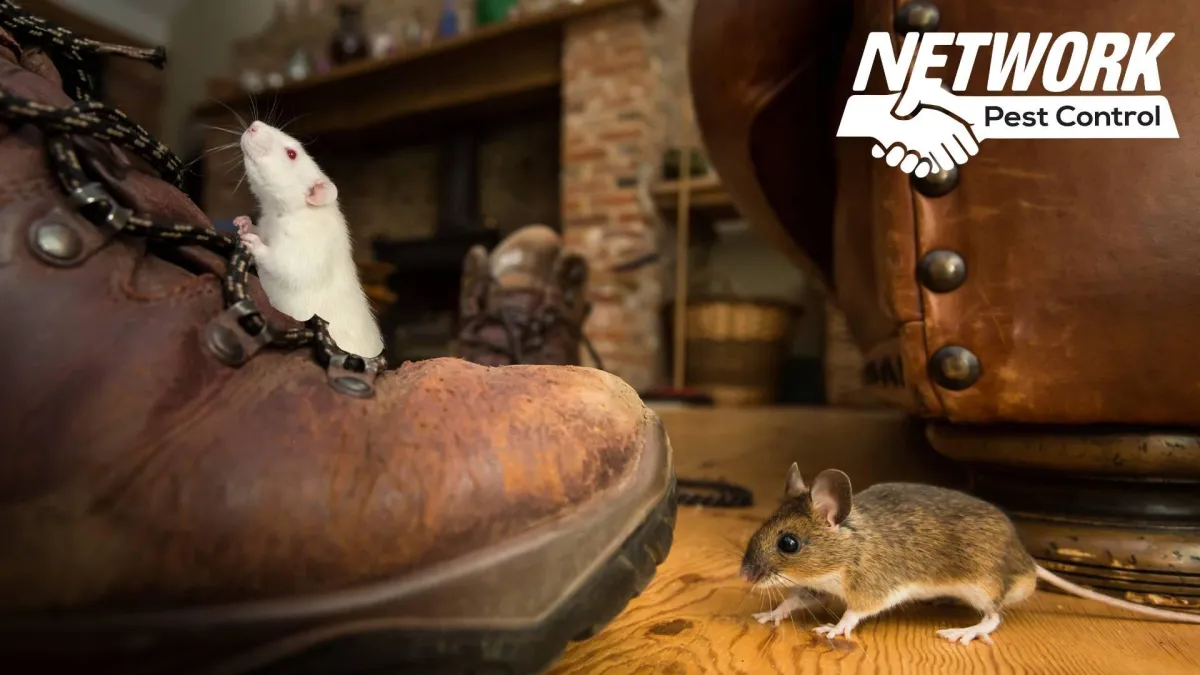Blog
Explore insightful and informative pest control blogs

Rodents in Attic: Signs, Causes, and Solutions
Rodents enter attics for warmth, food, and safe nesting, often using cracks, vents, or gaps to get inside.
Infestations pose serious health risks and cause structural damage, such as chewing on wiring and insulation.
To eliminate rodents, sealing entry points and using traps or hiring a pest control professional ensures a thorough and lasting solution.
Dealing with rodents in your attic can be frustrating and stressful. As someone who’s been in the pest control industry for years, I know how quickly a small problem can turn into a bigger issue if not handled right away.
Rodents can cause damage to your home and pose health risks to your family. In this article, I’ll share practical tips to help you get rid of them quickly and keep them from coming back. With the right approach, you can take control of the situation and protect your home for good.
Common Signs of Rodents in the Attic
Rodents in your attic can be a serious problem, and it's important to be able to recognize the signs. Here are some common indicators:
Scratching, scampering, or gnawing noises: These sounds are often heard at night when the rodents are most active.
Droppings: Rodents leave behind small, dark droppings that can be found in storage areas or corners of your attic.
Nests: Rodents build nests from insulation, fabric, or shredded paper.
Strong odor: Rodent urine and feces produce a strong, musty odor.
Bite marks: Rodents will chew on wires, wood, and insulation.
Increased presence of insects: Fleas and mites often accompany rodents.
Why Rodents Are Attracted to Attics

Attics provide rodents with everything they need to thrive: warmth, shelter, food, and safe nesting areas.
Warmth and Shelter
Attics offer a protected space away from predators and harsh weather conditions. During the winter, attics provide a warm and cozy environment for rodents to hibernate.
Availability of Food Sources
Attics can be a treasure trove for rodents. They may find food scraps, pet food, birdseed, or even insulation materials.
Safe Nesting Areas
The insulation and quiet environment in attics make ideal nesting conditions for rodents. They can easily build nests and raise their young.
Don’t wait until the damage is done—contact us today for expert rodent removal!
How Rodents Enter Your Attic
Rodents are very adaptable and can find their way into your attic through a variety of ways.
Entry Points
Some common entry points include:
Cracks and holes in the roof or around vents
Gaps around chimneys and windows
Openings in eaves, soffits, or gable vents
Climbing Abilities
Rodents are excellent climbers and can use trees, walls, and power lines to access your home. They can also squeeze through very small openings.
Health and Structural Risks of Rodent Infestations in Attics

Rodent infestations can pose serious health and structural risks to your residence.
Health Hazards
Rodents can transmit diseases like Hantavirus, leptospirosis, and salmonella. Their droppings and urine can also cause allergies and respiratory problems.
Structural Damage
Rodents can chew through insulation, electrical wiring, and wooden structures. This can lead to increased fire risk and costly repairs.
How to Get Rid of Rodents in the Attic
DIY Methods
While you can attempt to remove rodents from your attic yourself, it's important to be cautious and follow safe practices. Here are some DIY methods you can consider:
Setting snap traps or live traps: Place traps in areas where you've detected rodent activity. Be sure to check traps regularly and dispose of captured rodents safely.
Using bait stations or rodenticides: Bait stations and rodenticides can be effective, but they should be used with caution due to safety concerns. Follow the instructions carefully and keep them out of reach of children and pets.
Sealing entry points: Once you've removed the rodents, it's essential to seal up any entry points to prevent re-infestation. This may involve caulking cracks, installing rodent-proof vents, or repairing damaged areas of your roof.
Hearing noises in your attic? Reach out now for a free consultation and fast solutions!
Why Pest Control Professionals Are the Best Option
While DIY methods may seem like a cost-effective option, hiring a professional pest control company for rodent control offers several advantages:
Expertise: Pest control professionals have the knowledge and experience to identify entry points, hiding spots, and the type of rodents you're dealing with.
Specialized tools and methods: They use specialized tools and techniques that may not be available to homeowners, ensuring a more effective and efficient removal.
Complete removal and prevention: Pest control professionals can ensure that all rodents are removed and take steps to prevent re-infestation.
Humane and eco-friendly solutions: Many pest control companies offer humane and eco-friendly solutions that minimize health risks to your family and pets.
Professional monitoring and follow-up services: They can provide ongoing monitoring and follow-up services to ensure long-term results.
If you're dealing with a rodent infestation in your attic, it's highly recommended to consult with a professional pest control company. We can provide a safe, effective, and long-lasting solution to your problem.
Preventing Future Rodent Infestations in Your Attic

To prevent future rodent infestations, take the following steps:
Sealing Entry Points
Regularly inspect your attic and seal any cracks, holes, or gaps.
Install rodent-proof vents and chimney caps.
Maintaining Cleanliness
Remove potential food sources, such as pet food or birdseed.
Store items in plastic containers rather than cardboard.
Landscaping Tips
Trim tree branches that are close to your roofline.
Keep shrubs and plants away from walls to reduce rodent access.
Protect your home and family from rodent infestations—call us for immediate help!
Final Thoughts
Detecting and preventing rodent infestations in your attic is crucial to protect your health and home. By understanding the signs of rodents, their entry points, and the risks they pose, you can take effective steps to remove them and prevent future infestations.
If you're dealing with a severe infestation, don't hesitate to contact us.
Frequently Asked Questions About Rodents in Attic
How to get rid of rodents in the attic?
The best way to get rid of rodents in the attic is by using a combination of traps, sealing entry points, and professional pest control methods. Start by identifying where the rodents are getting in and blocking those areas with durable materials like steel wool or caulk. Next, set up traps or bait stations in high-traffic areas of the attic to capture or eliminate the rodents. It’s also important to clean and remove any food sources or nesting materials that could attract them back. In more severe cases, contacting a pest control expert is recommended to ensure the problem is thoroughly handled.
Will rodents leave an attic on their own?
Rodents rarely leave an attic on their own once they've settled in. They tend to stay where they have access to food, water, and shelter. Without intervention, they are more likely to breed and increase in number, causing more damage over time. It's essential to act quickly to remove them before the situation worsens.
What to do if you hear an animal in the attic?
If you hear an animal in your attic, the first step is to try and identify what kind of critter it might be, whether it's a rodent, raccoon, or bird. Once identified, inspect the attic and exterior for entry points. Avoid approaching the animal directly, as it could become aggressive or pose health risks. Setting traps or calling a professional can help safely remove the animal and prevent further damage.
How to get a critter out of your attic?
To get a critter out of your attic, start by sealing off any entry points so it can’t escape deeper into your home. Then, place humane traps or deterrents near where you’ve heard or seen activity. Once the critter is caught, release it far away from your home, or call a pest control professional for safe removal. Always check for any damage or contamination after removal to ensure your attic stays critter-free.
Craving a Superior Pest Control Solution?
COMPANY STORY
& EXPERIENCE
Craig Broadhead started his pest business in 2004 in California, called Pacific Pest Control. In 2021, he sold his business and moved his family to Arkansas to start fresh with a new vision of Network Pest Control. His goal it to make sure each customer has the best experience possible.


Network Pest Control
11205 Meadow Lark Rd. Rogers AR 72756
479.888.4249
